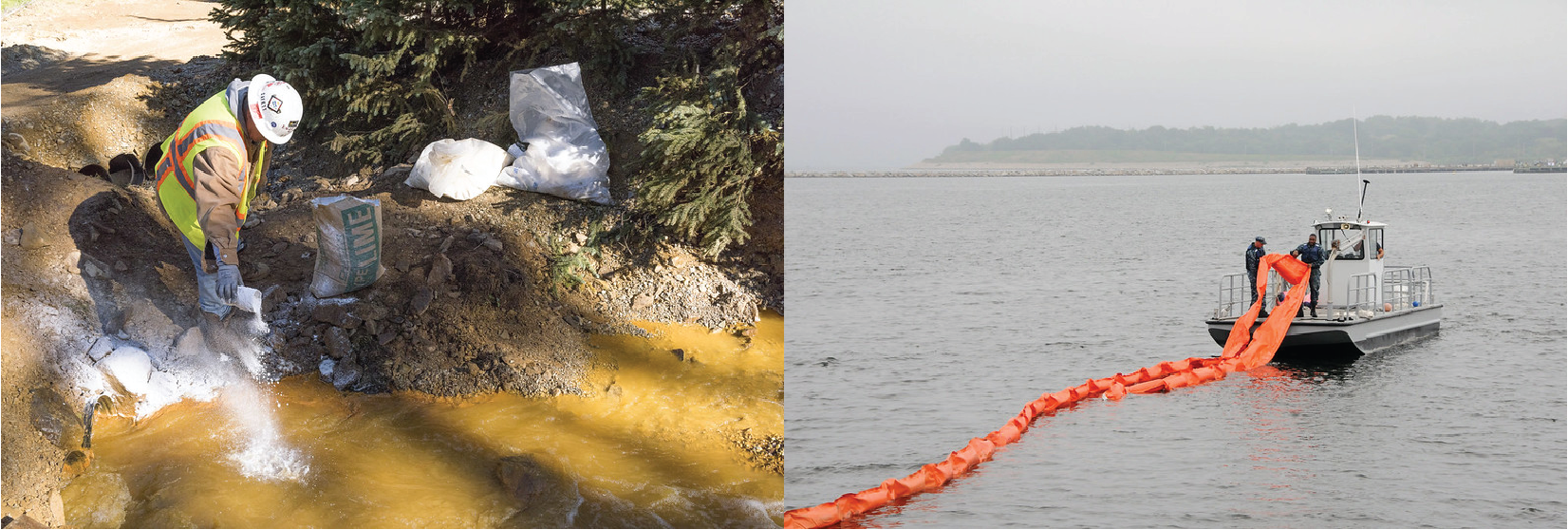Major approaches to controlling the spread of contamination include the following. These are discussed in more detail in the following sections with respect to their application on land and in bodies of water, with a special focus on oil release incidents:
- Containment – Mechanical containment efforts limit the area of release. This includes approaches that restrict the chemical material to within its original container. Recovery of the material may be possible.
- Neutralization – Chemical and physical treatments neutralize, solidify, precipitate, etc. the substance, reducing its risk to human and environmental health.
- Sorption – Chemical and physical treatments absorb or adsorb the substance, enabling its collection for disposal and in some cases (for example, in some oil spills), recovery.
- Dispersal – Chemical and physical treatments speed dilution of the substance, effectively removing the hazard by lowering its concentration (“flushing”).
- Vapor suppression – Chemical and physical treatments suppress vapor generation by volatile substances.



